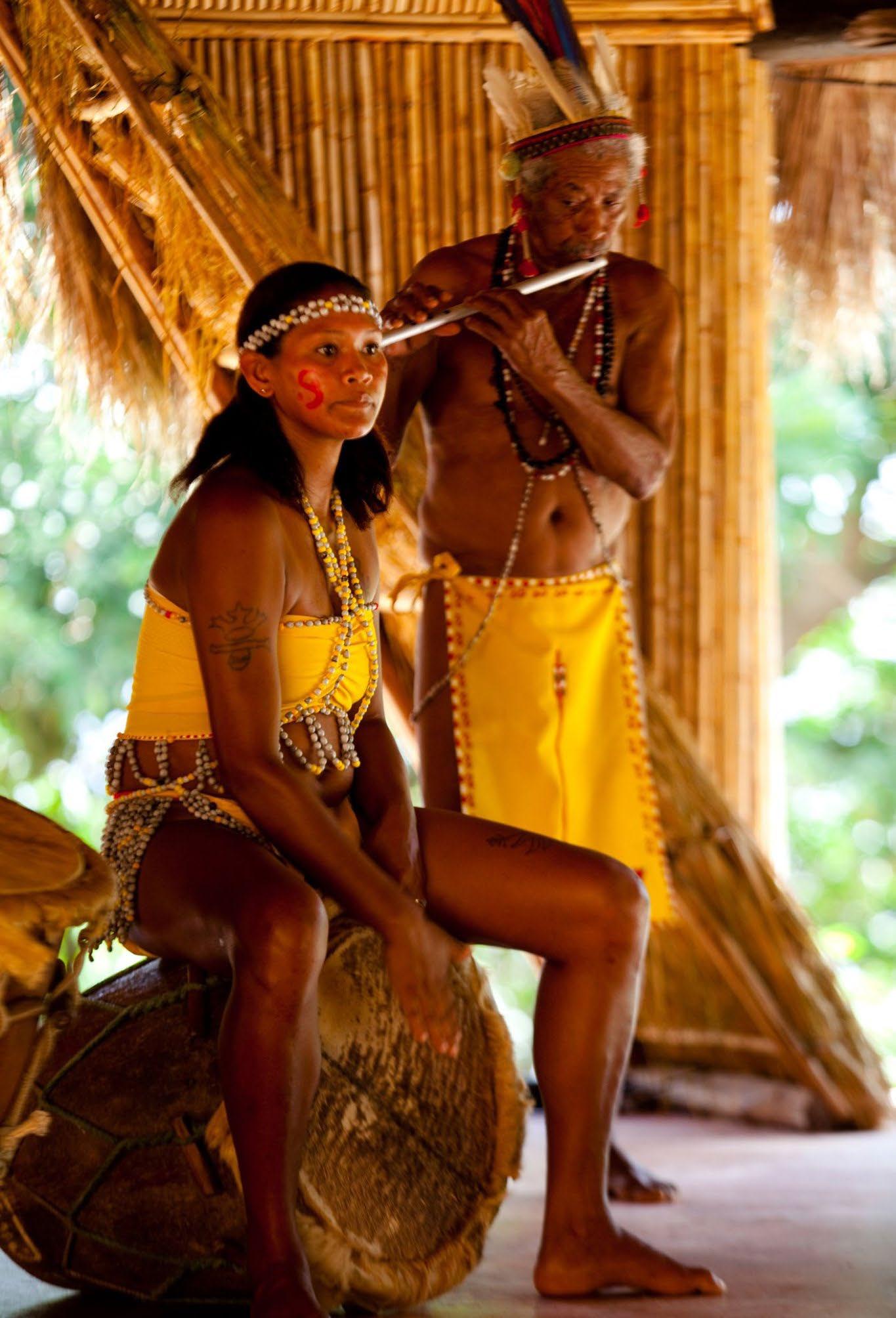
37 minute read
Kalinago Kweyol Connection Part 2
KALINAGO LANGUAGE AND INFLUENCES
By Gregory Rabessess
Advertisement
As we saw in the last issue of Creole Heartbeat, some Kwéyòl words are derived from Kalinago other related indigenous languages in the Guyanas and Suriname and from Arawak in the Greater Antilles. During the 1600s and 1700s, as the people of Europe and Africa interacted with the Kalinago people, they learnt and adopted Kalinago words for places, trees, plants, animals, fish, foods, tools and implements. In this issue we highlight some Kwéyòl words derived from Kalinago and related indigenous languages relating to foods – fruits, tubers and plants.
Kwéyòl Kalinago/ Other Indigenous English
Zannanna Ananas Pineapple Kachiman Kachima Type of fruit Papaya Ababai Pawpaw Kasav Kasabi Cassava Jomou Jurumu Pumpkin Gwiyav Kuyapa Guava Manyokmanio (also kiere) Manioc Mi Mariachi Corn Kaplaw Kaplao A type of yam
Annou Apwonn Kalinago Kalinago
Lamatina Ka Baruru Kanisitina baruru Kabarurutina Makabrurutina Atria buma? Biamburi Baruru numa Napi Abuaha Tabuaha aikini
English
I am hungry To have Plantains I like plantains I have plantains I have no plantains How many have you? I have four plantains Sweet potato To cook She cooks my food
Proverb of the month
Apwé fèt sé gwaté tèt
After the fete, it is head scratching. Usually after a festive season such as Christmas or carnival, people are usually broke, having spent lots of their hard-earned money. As a result, they begin to worry about finding money to meet their daily needs or expenses. January is often referred to as the hardest month because of this.
Annou Kouwi Mas Let’s Play Mas
By Gregory Rabessess
Mas Kannaval Jou ouvè (also jouvé) Sanmdi Gwa Dimanch Gwa Lendi Gwa Madi Gwa Mèkwédi Sann Téwé Vaval Kawenm Bann mas Sennsé Bann mové Souswèl souwi Daki Fidji mas Fwèt Kòn Kòn lanbi Lapo kabwit Chanté mas Stilbann Kouwi mas Siwo (n) Siwo (v) Bal Dansé (v) Dansé (n) Soté Bat tanbou Kalipso Soka Bouyon Wenn kannaval Wa kaliso Wenn kalipso Tennt kalipso Konpétisyon kalipso Pawad Praktis mas Mwen k’ay kouwi mas Nou k’ay kouwi mas An nou kouwi mas Masquerade Carnival Pre-dawn carnival jump up Carnival Saturday Carnival Sunday Carnival Monday Carnival Tuesday (Shrove Tuesday) Ash Wednesday Burying of Vaval Lenten season, dry season Carnival band Sensay bad band, a type of costume and masquerade tradition Bat costume black devils face mask whip horn conch shell goat skin, goat skin drums, the traditional drum-based music of carnival carnival song steelband to play mas fun, party, to have fun, to party dance to dance dance to jump (up) to beat (play) drums calypso soca bouyon music carnival queen calypso king calypso queen calypso tent calypso competition parade mas practice I am going to play mas we are going to play mas let’s play mas
Masquerade and Carnival
By Lennox Honychurch


Carnival, or Masquerade, as it was more popularly called in Dominica, was strongly an Afro-French festival. The observance of two days of feasting before Lent goes way back in European Roman Catholic history and was brought to the island by the French settlers. These traditions were linked to the memories of West African festivals as practiced by the thousands of enslaved Africans who were brought to the island to work the plantations, particularly after the development of sugar plantations from the British occupation of Dominica in 1763. Despite this, the island maintained a strong French influence. The colourful masques and dances were a feature of the French plantocracy throughout the Antilles. Samedi Gras through J’Ouvert to Mardi Gras were days when the French estate families visited each other for vast Creole fetes and the slaves would dance outside on the wide paved glacis, used for drying cocoa and coffee, while indoors others played music, served and entertained for tips.
With emancipation from slavery in the 1830s, the freed people brought the festival out onto the streets. In Roseau and Portsmouth particularly, the labourers, the porters, the ‘negres bord la mer’, fishermen and domestics were joined by bands from the neighbouring villages to flout and tear down the standards of the upper class. During the days before masquerade when the ‘chantuelles’ were rehearsing with their drummers, the people in the districts joined in the `chante mas’ and sang the ‘lavway’ chorus. Those nineteenth century years of Masquerade were not days when `the social barriers were broken down’, as so many like to claim. That came later. For a long period Masquerade was a brief annual revolt of the Dominican masses against a society which, for the rest of the year, demanded their obedience. The themes of the `chante mas’ made this clear enough. The best chanson exposed a social scandal or
a prominent personality or a piece of injustice. There were popular districts where practices were held and it was well known that distinguished persons would bribe certain chantuelles either to keep their name out of the songs or expose a scandal of an enemy.
From J’Ouvert on Masquerade days, the matadors, the bad-johns, darkies, red-ochre, jamettes, drummers and singers would be about town. The chantuelle, now in her prime, moved backwards facing the band leading the chante mas to which the band would echo the lav-way. In the nineteenth century the darkies and red ochre groups would form themselves into regiments on the Newtown savannah and engage in stick battles or bois bataille similar to the Kalinda of Haiti and early Trinidad. At the beginning of the 20th century the custom died, but the bands of oiled and sooted darkie and red ochre men remained a feature of the street bands. Here the strong African influence could be seen. Many of the costumes were unaltered from those used in tribal festivals of Central African kingdoms. The sensay outfits with cow horns were the most obvious. Rope sensay, pai fig, cloth and paper sensay were worn by the notorious bande mauvais who clashed in great street battles either with each other or with the police. There were sideshows and acrobats performing for upper class spectators who sat on verandahs, and in the early years stilt men or bois bois danced for the crowds on their 10 ft high stilts.
Later, a great variety of costumes developed including the black-dress¬and-corset, the tourists, the houmbaylay, and the imported wire masks with pink painted faces and red lips. And behind the safety of the mask there came the upper sections of society. The Creole elite of the twentieth century took the two days to ‘run masked’ and escape from their respect¬ability. Masquerade became an official holiday (it had not been previously recognised by the government and business sector) and the la peau cabrit bands were given donations or hired by society groups. Merchants and government clerks donned the sensay and joined the bande mauvais, and from the twenties to the early fifties, traditional Masquerade grew and flourished. The first committee to organise Carnival in an official way was established in 1947. In the 1950s Carnival in Trinidad became ‘respectable’ due to a change in attitudes, the demand for ‘clean’ calypsoes and, among other things, the Trinidad government’s observance of Carnival as a ‘national cultural heritage’. This resulted in a strange reverse to the European type festival with queens, shows and organisation. Soon Dominica followed suit, and added to this, there was a tragic fire during Masquerade of 1963 which caused the government to ban masks and sensay costume. But changes were already being made and they were rapid. The organisers and bandsmen looked to Trinidad for ideas, steel bands took over from the small la peau cabrit groups, and the Trinidad-style calypsonian replaced the chantuelle and her chanté mas. Expensively costumed bands and tidily dressed revel¬lers took to the streets and the taunting satire and sarcasm of old time Masquerade was gone. In 1993, thirty years after the traditional sensay was banned, the costume was But many other changes were taking place: Carnival was adopted as a tourist attraction; the government invested money in the festival; electronic bands and recorded Hi-Fi music on large trucks replaced the live bands moving on foot with the crowds; the younger revellers were not inclined to sing along with the chorus as before and generally, many aspects of the old time masquerade faded away.
What remained most powerful were the old songs; and these popular ballads live on not only because of their lasting quality but as records of folk history. The Band Mauvais chant ‘Adieu William Oh!’ recounts the clash between bandsmen and the police, whose chief, William Leighton, was determined to crush the fighting group. ‘Solomon roulay’ was brought to Roseau by villagers of Pointe Michel, who sang of the death of Magistrate Solomon near a landslide which still bears his name. ‘Hosai lamp la’ exposed a saucy local scandal and ‘Defay Mama Defay’ recorded a disas¬trous fire in Roseau. Modern folk groups revived these melodies but traditional Masquerade is over and as the old revellers used to say on the night of the Mardi Gras, ‘Bal fini, violon en sac’.

Kwéyòl an Danje? Part 2
by Gregory Rabess
In Part One, published in the last issue of this magazine, we examined the situation of creole language in Dominica. During the past fifty years, there have been various efforts aimed at promoting Kwéyòl with some success. Despite these efforts, there are indications that spoken Kwéyòl is on the decline. Kwéyòl is not yet an essential part of formal education and the media. The standard writing system for Kwéyòl is not widely known and the policy framework to guide the development of the language is lacking. It does appear however that the overall social, cultural and policy climate is now more conducive to addressing the problem areas. In this article we look at some key actions needed to revitalize Kwéyòl in Dominica.
Language Policy
In countries in which many ethnic groups and languages exist, there is a tendency to have a national language policy to resolve languages issues and conflict and create space for various national languages to flourish. This is particularly important for former colonized countries such as ours where indigenous languages were suppressed, stigmatized and the colonizer language imposed. Resolving language issues is a very important component of decolonization and the building of a new national identity. In Haiti for example though less than 10% of the population speaks French, it is always described in western media as a French-speaking nation. French was the official language until the overthrow of Duvalier following which Kwéyòl became an official language. So this is where policy kicks in and can revolutionize things. In Dominica, our creole culture was afforded state recognition and support as a deliberate policy of the Le Blanc government in the 60s. In relation to the language question, the key policy issue facing us today is how do we create a space for Kwéyòl, Kokoy and Kalinago to develop and flourish alongside standard English or Dominican English for that matter.
To guide all and sundry, a national language policy thus needs to be developed and officially adopted. Such a policy will not only address Kwéyòl but English and other languages in Dominica such as Kalinago and Kokoy. Such a policy would address Kwéyòl in education, Kwéyòl and the media, the issue of availability of translation in terms of public information and services, the courts, health care and the language rights of citizens generally. It would be a master document which would serve as a guide to institutions in developing and adopting pro-Kwéyòl policies and actions for example.

There is no need to re-invent the wheel. Already the National Cultural Policy, though under review, has a section on Kwéyòl. The Department of Linguistics of UWI, Jamaica has already drafted and circulated language charter on Kwéyòl which can serve as a useful guide. What is needed is the creation of a task force comprising key stakeholders mandated to develop a draft policy for submission to the relevant state authority for adoption.
Kwéyòl in Education
Kwéyòl has been suppressed ever since the commencement of formal education in Dominica following Emancipation in 1834. This suppression was a direct result of British colonial policy aimed at anglicizing Dominica and its people. This resulted in negative attitudes among the local population, educators and policymakers in relation to Kwéyòl to the extent that they have accepted the colonial viewpoint and are participating actively in the suppression of Kwéyòl in education and the negative stigmatization of Kwéyòl generally . Di béké really did a job on us, to use local parlance.
As a result of years of advocacy by creole activists, public opinion is now more favourable with respect to the use of Kwéyòl in formal education. In a sense, one could say that the debate is over and that the question before us is actually how to implement a Kwéyòl programme at all levels of the education system. Already a draft Kwéyòl language curriculum has been developed. A pilot programme has commenced in several primary schools. There are rich experiences right next door in Guadeloupe, Martinique, St.Lucia, and further away in Haiti and Seychelles which we -73-
can draw on, experts who can assist. In fact, the Konmité pou Etid Kwéyòl (KEK) has already held a workshop with a Guadeloupean expert, Paulette Jno Baptiste on developing a programme for Kwéyòl in education. A key step going forward is to create a task force or committee comprising representatives of the Ministry of Education Curriculum Unit, the Cultural Division and KEK with a mandate to develop and finalize a programme, a curriculum, a programme implementation plan, training and teaching resources. A similar approach can be taken in relation to Kalinago and Kokoy.
Media
In relation to Kwéyòl and the media, there is need to address the issues of programming, recruitment and use of the standard orthography. In terms of programming, DBS Radio still remains the only radio station in Dominica with significant Kwéyòl programming. And even in this case, Kwéyòl tends to be ghettoized..not mainstream and the station has only a handful of fluent Kwéyòl speakers on staff. Kwéyòl on television is limited to a news feature within the news programmes of GIS (Government Information Service). Kwéyòl articles or texts in the local newspapers are rare. Written Kwéyòl however does have a greater presence on posters, signage and social media.
Going forward, all radio stations need to introduce Kwéyòl programming as standard. As part of this, the stations need to recruit announcers who are fluent in Kwéyòl. Recruitment policies should favour persons who speak more than one language, certainly English and kweyol as basic. On air programming, programmes generally done in English or Dominican English should also include Kwéyòl and Kokoy as appropriate. Efforts must be made to ensure that announcers are fluent in standard English as well..too many grammatical and pronunciation errors on air. An element of language training is therefore necessary. These recommendations also apply to television. The local newspapers and related media for their part need to make a greater effort to include more Kwéyòl material and utilize the standard writing system. Poster and promotional material should have Kwéyòl versions or include elements of Kwéyòl /creole in terms of text and design. All this requires the use and widespread dissemination of the standard Kwéyòl alphabet. To facilitate this, Kwéyòl spell check apps, English- Kwéyòl translator apps and online dictionaries need to be developed. The technical experts and KEK could collaborate on such initiatives. In addition, given that many of our songs are in Kwéyòl, lyric videos, now quite popular, should be produced. In so doing, the standard written Kwéyòl would be promoted.
Visibility
When we talk about visibility we mean making Kwéyòl more visible in our environment, in public spaces, in your face so to speak. This can be done by way of signage, street signs and signs indicating names of places, public buildings, billboards, posters, artwork, murals, sculpture and architecture among other things. A programme should be taken by the Traffic Division and other stakeholders to redo all road and street signs in English and Kweyol. Institutions such as Dominica Festivals Committee should ensure that festivals such as carnival and the WCMF (World Creole Music Festival) reflect Kwéyòl language and culture through promotional material, written texts, poster design and venue décor.
Names of such as Pond Cassee need to be correctly spelt and be corrected in all maps and documents. The same applies to Apres Bondie C’est Later…although one could argue that it makes a nod to French, Kwéyòl and Latin (sorry English you lose out) all in one sentence which can be a good thing in itself and reflects our linguistic heritage. The key point being made here is the need to correct mis-spelt names and promote the standard written Kwéyòl.
Government is currently engaged in numerous infrastructural projects. It should therefore make provisions for public art, signage and décor that reflect our creole language and culture. The same applies to the private sector. Actions such as these could provide employment for our artists, sculptors, graphic designers, builders and other specialists. The idea is to make Kwéyòl visible in as many public spaces as possible so that locals and visitors alike will recognize that Dominica is a creole nation, that it exudes creole in its built and natural environment.
Youth Engagement
Revitalization of the Kwéyòl and creole culture generally must necessarily engage the youth. Apart from initiatives in Kwéyòl in education and the work being done in culture by the Cultural Division, there needs to be a strategic engagement with the National Youth Council and the Youth Division, youth clubs, sports clubs and other associations of youth in various efforts or actions being proposed for language research, development and promotion. The National Youth Council for its part could develop and spearhead some Kwéyòl initiatives.
Research
due in some measure to research carried out by KEK, the Cultural Division and various institutions and individual creole and cultural activists in Dominica and in other parts of the world. Research is therefore an important tool for promoting the development of Kwéyòl. Research helps inform policy. Going forward, more research is needed to determine the actual situation in terms of spoken Kwéyòl. One cannot simply rely on anecdotal evidence. Hard data is needed. In this regard a unique opportunity presents itself with the upcoming housing and population census. It is recommended therefore that a number of questions be included in the census questionnaire to establish data on the number of Kwéyòl speakers, Kokoy speakers, Kalinago speakers, English speakers on island. It is a mistake to assume that English is the first language of all Dominican citizens.
Language Academy
As we move to make our languages more official, more standard and standardized, there is need to establish a language authority. Such an authority would make determinations on key issues such as the standard writing system, new words needed or entering the language and recommendations for and oversight of, language policy matters. Kwéyòl words are needed for new concepts, new technologies, new situations, new phenomena for example pandemics such as HIV/AIDS and the COVID 19. Should we say AIDS or SIDA, òdinatè or konmpyouta? The first language of reference ought to be French since it is French creole. In Dominica however English, rather than French, is the main language of reference. Should we reference English or French? Would the entry of too many English words make Kwéyòl lose its French character? Currently, radio announcers, media personnel and individuals generally make their own decisions on this and this is problematic. A language authority would resolve this issue.
KEK currently performs the role of a language authority in a limited way. France for example has the French Academy which is the established authority for the French language. Haiti has created Akademi Kreyòl, a creole language academy though an act of Parliament. These are experiences we can draw on. The development of a language authority should be included as part of discussions and actions related to the development of national language policy, going forward.
Lèspwi Kwéyòl
Finally, underpinning all this is the concept of lespwi kwéyòl that is, a creole cultural attitude, a creole consciousness, a creole philosophy. A creole attitude would determine what we speak, what we eat, how we dress, how we build homes, what we produce in the arts and creative industries, our policy decisions and political will. A creole attitude influences our morals, our behavior, our spirituality, how we worship, in other words our whole way of life. As it stands, some persons have a ‘konpawézon’ attitude, a condescending attitude to creole, given it token value, recognition and lip service. To some creole is a seasonal affair. Such attitudes also impact on the work of important institutions resulting in colossal errors and damage to efforts aimed at standardizing Kwéyòl and efforts at making creole more central to our culture and development agenda. Kwéyòl/creole is therefore everybody’s business and this includes the policymakers. Kwéyòl/creole should be part of our DNA as Dominican people. This is what underpins our Dominican identity and gives us an edge in relation to the rest of the Anglophone Caribbean. Kwéyòl is fact the most widely spoken language in CARICOM. It is spoken by over 15 million people worldwide. Let’s therefore make greater efforts to speak Kwéyòl. Annou palé Kwéyòl. Let’s all adopt a creole attitude, a lèspwi kwéyòl. With a lèspwi kwéyòl, we stand a better chance of revitalizing Kwéyòl and ensuring its central role and place in our culture and development.


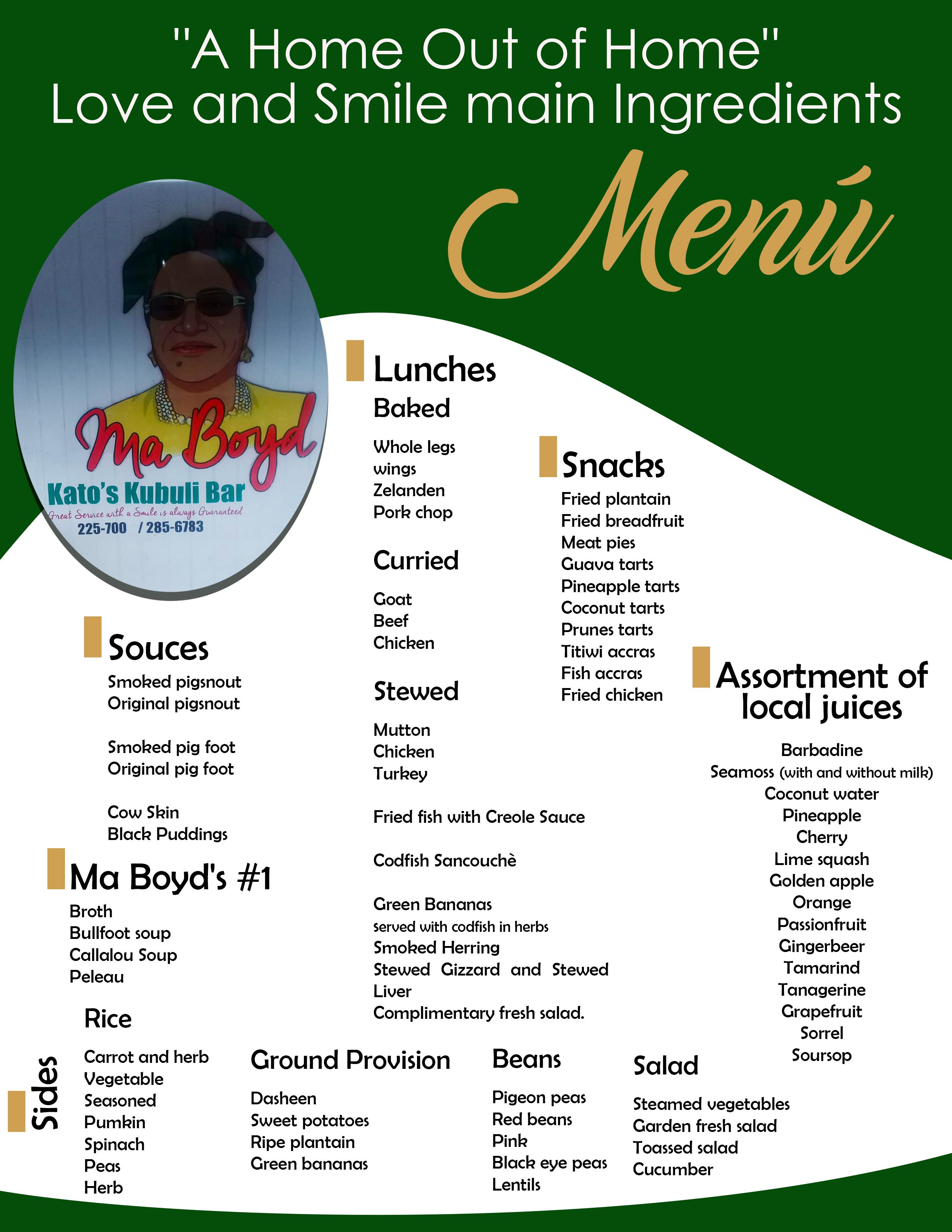
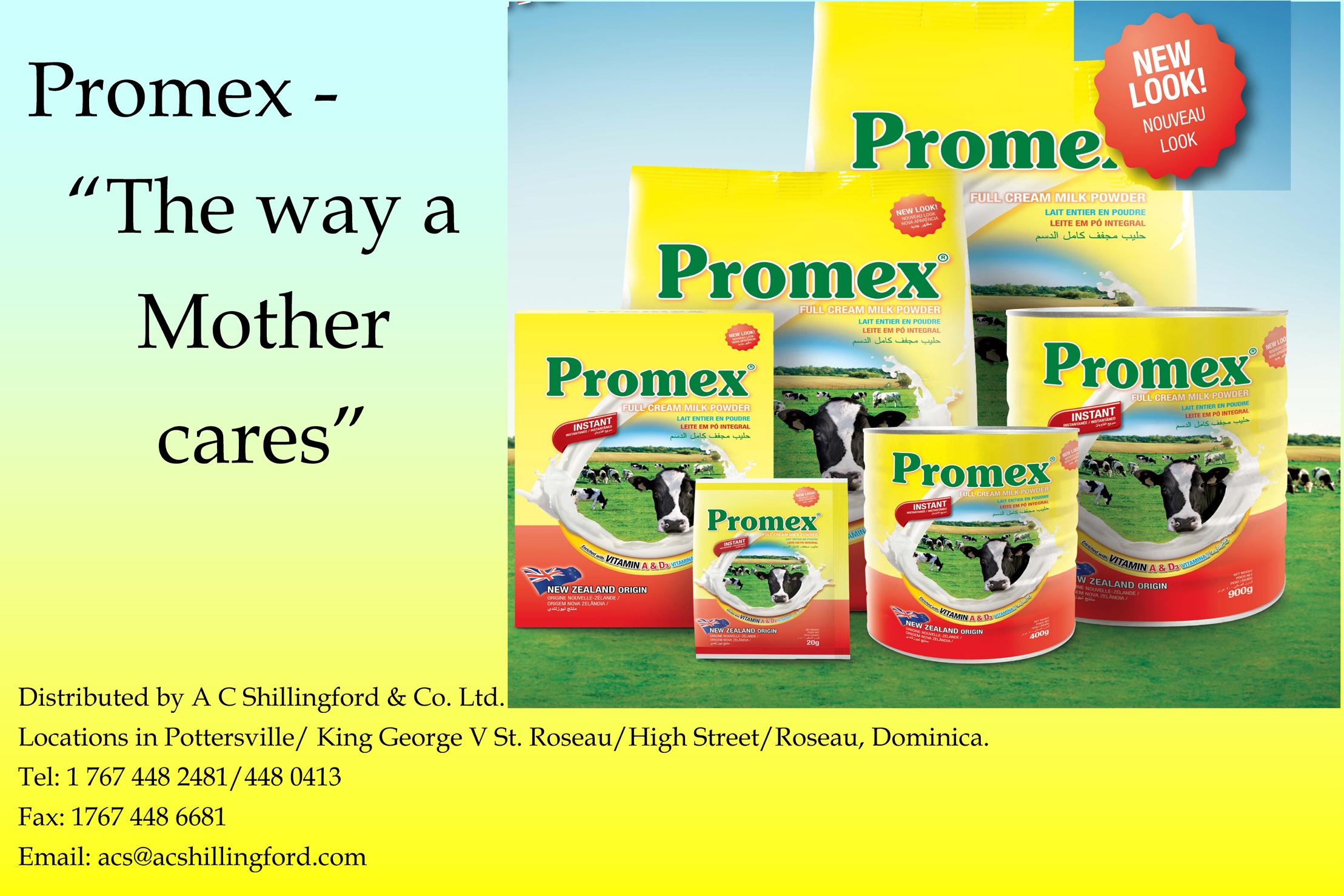
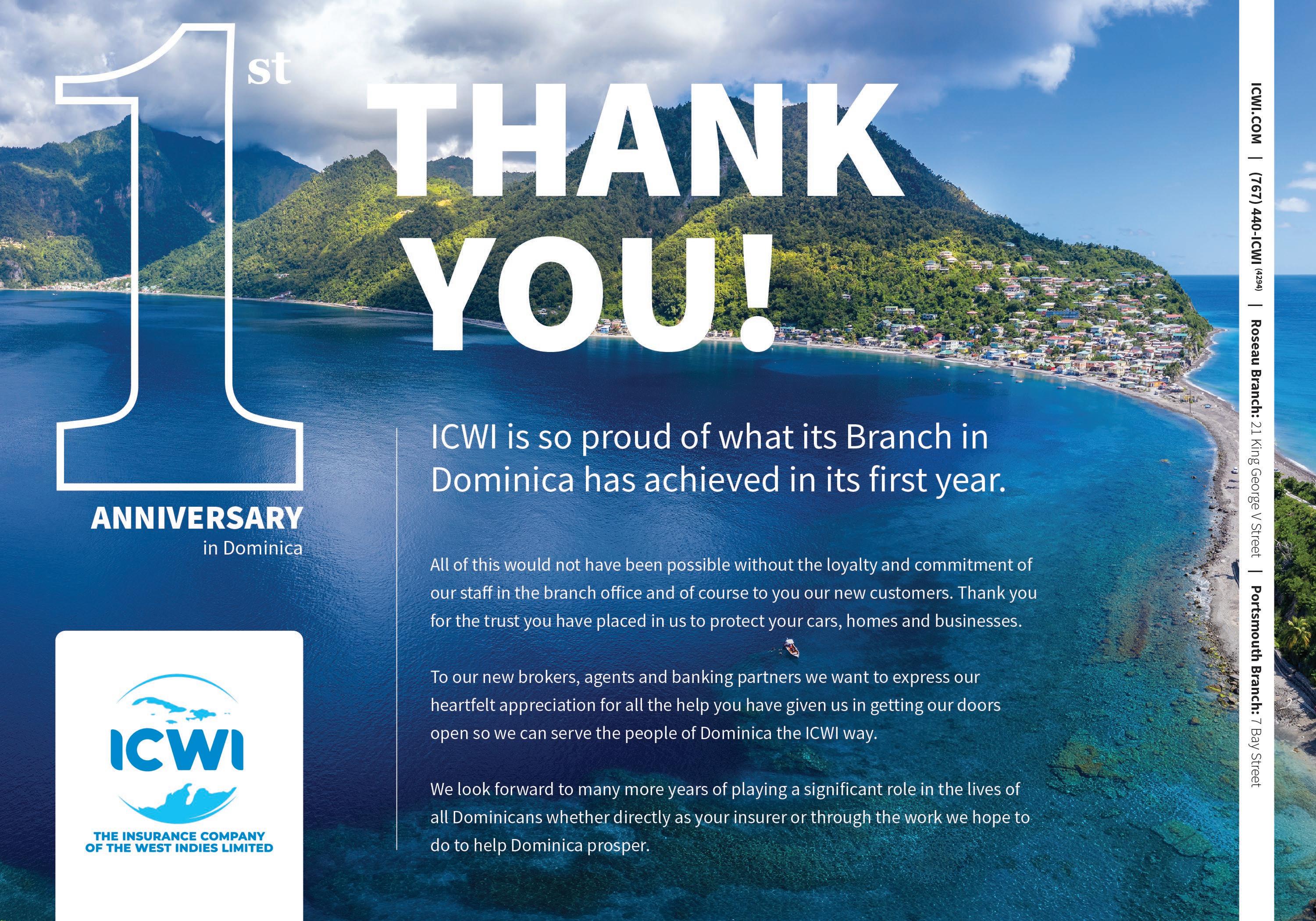
Revision. Part I spoke of the Definite Article “the” as being “la” sometimes pronounced “a” “ya” “en” placed AFTER the noun unlike English. There are many COGNATES so feel free to say: Telephone la, restaurant la, etc...
Part II demonstrated abundantly that many words are French rooted and those nouns starting with a French vowel : a, e, i/y, o, u, would place a Z to start the word and become Creole... Remember the Z factor... Note this is not unusual for one language to claim etymology from another... English for example... Thus affaires = business = zafaire...
Part III PERSONAL PRONOUNS Singular I = mwen/en/mon you = ou/ oooh he/ she/ it = i ( pronounced eeee) Plural We = nou / noooo you = zor ( like door in sound) They = Yo With these 3 tips you only need verbs to start making sentences... Ain’t it simple? Please do not get confused with the numerous variations at this stage. One is universally understood...
CREOLE LANGUAGE TIPS PART 4 FOR TOTAL BEGINNERS - SPEAKING - NO WRITING. In rather unorthodox fashion, we began with the definite article “la” placed after the noun: resturant la=the restaurant. Part II dealt with the “Z factor” by adding a Z to French words beginning with vowels to build vocabulary: ordure= zordi= garbage (disregard the spelling). Part III handled personal pronouns like “mwen”... singular and plural...( All tips are available on my FB feed) PART IV : Verbs The vast majority of verbs in Creole end with the sound “ ay” like in “say”... written by some as “é” with the accent: mangé = eat ( or to eat no er infinitive) dansé = dance palé = speak (or palay as in anou palay TV) The Present Tense calls for the personal pronoun followed by “ka” then the verb. Mwen ka mangé = I am eating/I eat/ I have eaten/ I have been eating ( Please don’t write saying that “I have eaten” and “I have been eating” is not the Present). ou ka mangé = you are eating, etc, etc... REVIEW THESE FOUR SIMPLE TIPS AND START MAKING SENTENCES. BONAPÉTI= ENJOY YOUR MEAL! bonapaytee...
Creole Language Tips
Part 3 & 4
by Gordon Henderson

Sound Engineer Dada Lawrence Part 1 - One on One
by Gregory Rabess
Rabess: Greetings bro…can you tell us a bit about yourself by way of introduction how did yo get into music and music production generally speaking at a young age.
DADA: I am Krishna Lawrence better known as Dada from Bath Estate, born and raised there. I grew up in 6 Cotton Grove, Bath estate by the school area. Ever since I was very small like maybe six or seven, I was always fascinated with music obviously as a child when seniors, parents, playing music with their cassette players and their set, that’s what they used to call it before, their set… to the point when they used to have them double decks. I used to be trying to mix music like what I used to be hearing on the radio and all those kind of things there. I always had a fascination for speakers and that kind of thing.. My parents had a stereo, I can’t remember the brand of it and the speaker, you could remove the cover and you could see the speakers and what not. So every time they used to be playing music, I would uncover it and watch and see how the bass speaker moving. I put my finger on it all the time and just rub it and feel the vibrations and that kind of thing. I still do that today as a matter of fact. I do this up to now…my speakers, especially mixing. Whenever I am doing mixes, I always rub the speaker suspension because it does give an idea as to how the bass is responding, how the low frequencies are responding. Back in them times I never knew that. After a time I realize….that is something people just do. So ever since then the interest has always been there and it probably just grew from strength to strength. Growing up ..when I was about twelve, thirteen, when I had my first computer, I ended up getting a programme called Fruity Loops, version one. It was beta. That was the first-ever version of Fruity Loops. I was always fascinated with how you could put this together, actually do it in a way without having a whole band there. In these programmes, they used to have demo production, demo beats on there and stuff. So I would just be playing around with that all the time to the point where I learnt to manipulate it in my own way and do my own thing. I would say now that the interest in music was always there. It is not something that came after a while. But in terms of production that is where the real interest for production kind of sparked. Gradually after that I kind of got moving into deejaying.
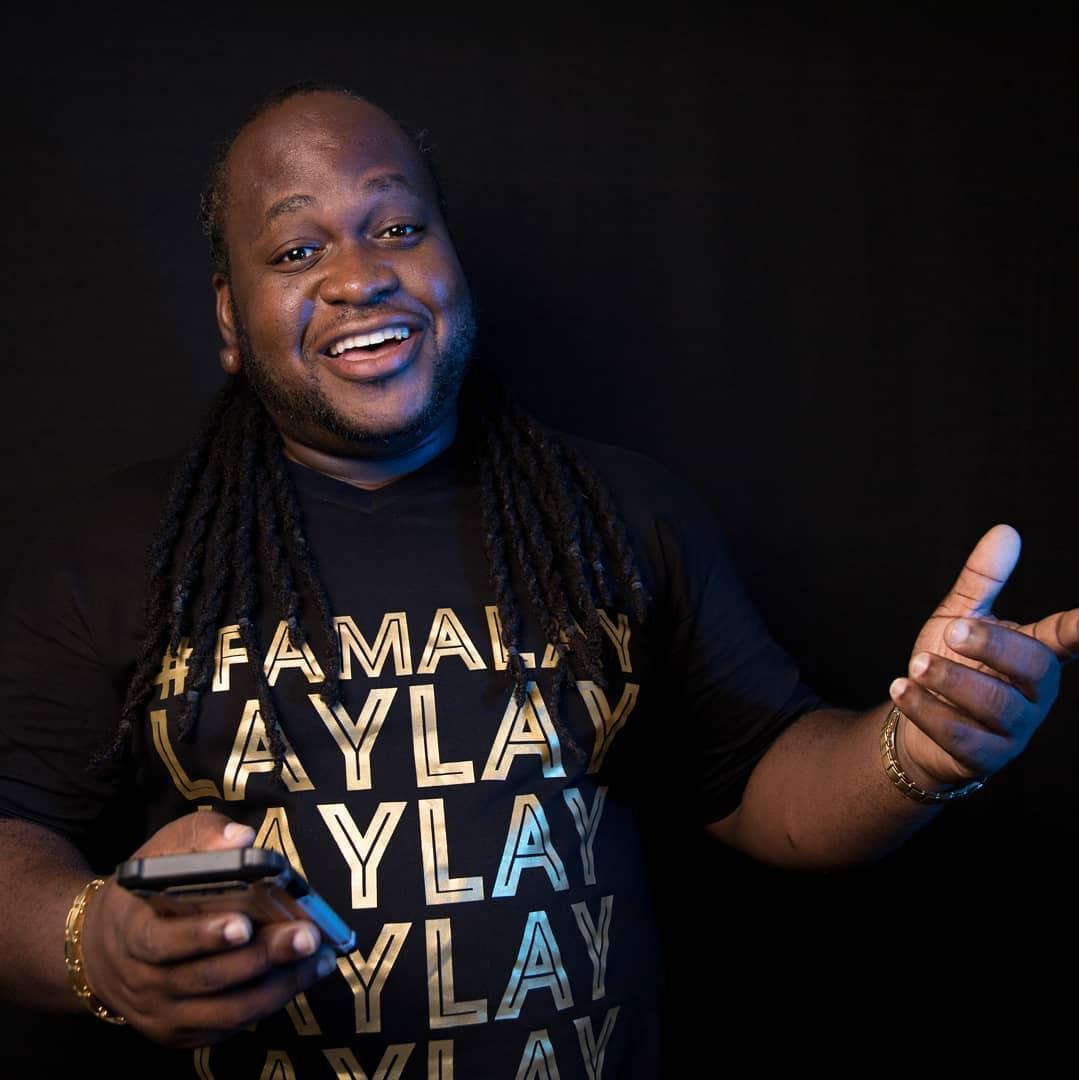
Rabess: You had a dj name, non?
DADA: Dada. One name all de time. I kind of moved into deejaying briefly after that, again because of my understanding for beats and how to mix beats, like mix one beat into another beat, similarities and patterns and all these things like that. So I always felt like whenever I was mixing, what I used to be doing with it, to me it was better than what I used to be hearing out there especially on the radio. That gave me a desire to go out and show people how good I could be as a DJ and a selector, understanding songs, the messages, when to bring it in, all that kind of thing you know. During those times dancehall was really prevalent in my upbringing so I was paying attention to a lot of the dancehall culture and the sound systems and all those things. I used to be studying those things a lot. During those times there was when it had the era of p2p (person to person) sharing music. It wasn’t so much you would by CDs and ting but more or less downloading music. That’s when I had just kind of started off with Napster, Warezz and those things there. That was in 2000. That was really when that whole vibe was happening. So it was like a whole new phenomenon in the music industry. I could try to get all the music I wanted on the internet without having to go and purchase anything per se. So again that gave me access to more material and more options and more of everything and
stuff like that. During those times I was also in high school. So I kind of spent ninety percent of my time doing music, and exploring the possibilities and what could have happened, what’s happening. I was also laying markers down. So from a DJ standpoint there were certain DJs in the business that I used to pay attention to. At the time there was Black Chiney, they had just come out and that’s as far as Jamaican culture. And then there were some American DJs doing hip hop that I used to be paying attention to.. Deejay Envy Deejay Clue, Dr. Dre, legendary hip hop producer, and Timbaland. Surprisingly all of these guys, Dr. Dre, Timbaland, they are also producers. They were also deejays before, early in their careers. It‘s very interesting that they had that similar type of development in music.. the path. I never knew that deejaying was so connected to production. I just always felt that if you are a good deejay then you should be a good producer because it is almost the same thing. It is about the beats and the musicality and all these. Deejays are very good at that. Your music IQ is really high as a deejay, well supposed to be high as a deejay. As a deejay you spend a lot more time exploring music and if you have that asset, it helps you to be a better producer because your music knowledge is supposed to be wider.
Rabess: In terms of your transition from deejaying to production focus how did this play out
DADA: Well there was never really was a transition, both of them were happening at the same time. One obviously can be utilized more than the other at that time. So at that time there were more avenues to utilize the deejaying aspect than the production aspect. When I was doing production I didn’t know what I wanted to produce yet per se, like what would be the focal point, what would be my thing. I just knew I wanted to be good in everything. Obviously we grew up in Dominica so there is Dominican content. I always want to be an expert in Dominican content period, just like with food. I always use this analogy all the time. I think that as Dominicans, that’s my theory, as far as being a very good chef or cook especially as a Dominican chef you have to be an expert in Dominican dishes. Ironically again I was watching a documentary, actually it was a show on network called chef’s table it’s about various five star chefs in the world. So there is this Italian chef that they were interviewing. He is one of the best chefs in the world and what not. He was saying that people are always talking about his food and how it is so great but he checking that the only thing he making is Italian food; the same way he learnt to make it from a child. I have the same principle when it comes to music and food. As far as Dominican music goes I’m supposed be an expert in Dominican music, period. I’m supposed to be able to manipulate it any which way I want as a Dominican, right. At the time as I said, deejaying had more avenues so I was pursuing deejaying. But then after a while, when I realize that it was really pulling me down a path that I did not really want to go….the deejaying. I was spending too much time deejaying, having a gig over there, go country. For example, I went to do a couple gigs in Grand Fond once and I realize… you see that going out thing and staying up whole night, that’s not my kind of thing
Rabess: The roads, the journey, it is tiring you know.
DADA: It is tiring. I don’t have a problem doing it but I just did not want to do it for deejaying. The returns were not enough for what I wanted. People don’t value deejays like that. I feel that my time is worth more than to go wherever and play for that little bit of money. So I just decide, you know what, deejay is a thing for me to use for education purposes, to boost up the production side of it, let me just stick to that production thing. So that’s how I kind of phased out of deejaying a bit after a while. As a matter of fact I used to be in the deejaying competition. I think the first year they had it when Mystik won. What happened was…i was a part of competition. And again now me having this dilemma in my head, after a while, I dropped out of the competition. After the second or third show and I gave Mystik my set which made him win the show. That’s how Mystic ended up winning the Heineken deejaying competition. It was my set because I wanted to focus on other things. But the fact that Mystic could win with my set told me that my set was good; was better than everybody else’s set. So I was onto something there. So after that I kind of phased out of deejaying and I just focused on production..dancehall, reggae, hip hop, bouyon. And then after a while, I kind of start to jump into calypso and cadence. When I was growing up I never really had that kind of influence around me, for the cadence in particular. Calypso was always there but cadence was kind of…
Rabess: Yeah because it kind of declined at the end of the seventies and went into a sort of a…
DADA: The influence I had for the other types of music was not there.. cadence….
Rabess: But you eventually got into that groove, I think I recall you did something for the credit union, isn’t it.
DADA: Yeah absolutely. So what happened now, I like to take things in stride and phases. As I said I have laid down markers. So I lay down my markers for the hip hop and dance hall. When I was….I would not say ‘not interested’ because I am still interested… in the earliest days when I was less calculated about all my decisions, it was just a talent. I wanted to be everything. At that stage, during that period obviously, you laid down markers to know who, what is the standard you are trying to be like and that’s when I get to know about the history. It’s so important. I feel that history does give me context. So I feel like I am a continuation of what was happening before. I don’t feel like I come to change anything. So that has always been my perception and my perspective in music and in life in general from a philosophical standpoint. So when I was coming into dancehall I used to hang out a lot of guys that were older than me who have a lot more knowledge about dancehall than I have, who helped me to see properly or helped me to see from a more mature perspective. I would not go and listen to anything and just have an opinion. Obviously I would
listen and have my own opinion but I would talk to them about it, hear what they would say. Obviously they have more experience Rabess..A kind of mentoring thing then.
DADA: Something like a dat. So that’s what happened with dancehall. I used to listen to dancehall, reggae and all of that. Bouyon in particular has always been there. I grew up on bouyon. I used to practice all of WCK’s music. I know all of WCK songs. I am a WCK fanatic. When I say WCK I mean the original WCK. I used to practice their songs from a child. I know all the parts. As a matter of fact I used to take WCK songs and re-programme the beat on my computer. I used his as practice. I did not know that this was something people used to do. I just felt it is something that would help me to understand what they were doing. I did that for years with almost all the popular CK songs. That gave me a lot insight as well into the type of instruments WCK used to use, how they used to use it, the balances as far as mixing and all dem tings there. I learnt a lot of technical lessons from that as well. And also, it helped me to develop faster than if I wasn’t doing it. It helped me to sound more like a professional… faster. I remember I made a beat once and Wackers..I think I was thirteen.. Wackers used to work down at GIS (Government Information Service). I made a beat. I used to see Wackers all the time coming to work. After I made that beat I wanted Wackers to listen to it. I figured that he can give me some feedback. I remember catching him after work once and tell him about the beat. He come through, he listen to it and he was like..’boy Dada you dat do dat boy, boy dat bad, dat bad you know boy, what, boy just keep up de work you know, just keep up de work, I see what you doing there, just pay attention’ and what and what and what not. I can never really forget those experiences because those things build up your confidence. From there I kind of more or less focused a lot more on bouyon and understand bouyon and trying to manipulate it in my own way.
Rabess: Any names you want to mention that you produced for in the earlier days.. bouyon artistes..
DADA: In my early days of producing bouyon it was more or less Triple Kay. That was in 2006, ore or less producing for Triple Kay. But then we had a couple of little groups. I used to work around with Bush Town. That group was existing at one point…and couple guys from Bath Estate..our street crew..we used to do our little thing. When things start to get really serious was when Triple Kay came into the picture. Even though I was doing my beats all these years prior to 2006, I always wanted an avenue as to how to get my music to them man, them man being CK. CK to me was my idol. I wanted CK to have my music. I always felt I need to work harder, to create more, I need to be better, because in order for somebody to take notice of your work, you need to turn their head and in order to turn their head you need to do something exceptional. It is a very high standard especially WCK at that time. The reputation of CK was that of a very high high standard. So you could not just bring anything to them man and whatever. So Triple Kay to me was an experiment because I was using the knowledge that I gathered from manipulating WCK beats. I don’t know if you remember that style…reketeng that Bushtown and Klockers used to be doing. That was a strong influence around me as well. They were taking hip hop and mixing it with the bouyon in a kind of way. They have the whole ragga style like what Skinny used to be doing. I was working off this kind of vibe because I wanted to create something, not new, new…but I wanted to create something that was different but at the same time you can see the resemblance with the original...with a fresh look.
Rabess: Any songs want to mention that stood out when you were with Triple Kay, that one could say that is Dada’s beats?
DADA: Ya man, a number of songs. As a matter of fact if I have to go down the list for you, you will say is me that make Triple Kay.
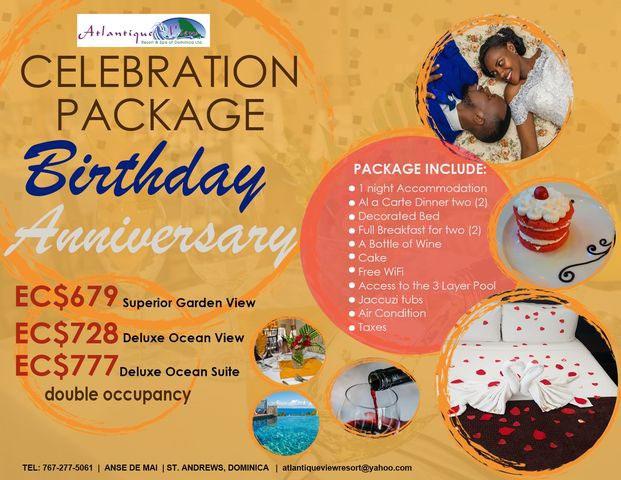






Bouyon Connection
with Claudette Peters
You are not only a proud Antigua but you are also proud of your Dominican roots. Tell us about your Dominica Roots.
Oh yea I am very proud of my Antiguan roots. My mom is Isaline Leblanc from the village of Vieille Case in Dominica. Her father is from Guadeloupe and her mother from Dominica – still alive. I remember coming to Dominica every summer and every Christmas to spend time with my family in Vieille Case. This has never stopped; we have been coming to Dominica every chance we get - my brother, sister and I. My mother has three of us.
What pushed you to connect with our local bands?
Even before I started recording with bands in Dominica, I had a connection with the musician in the business. I was a member of Da Band in Antigua and Barbuda and Cornell Phillip was our engineer. He would actually mix and master our tracks and even add a few other elements to enhance our music; so he has always been in our life. He has also come to Antigua. I had a close relationship with Cornell and Keith from WCK and so that was pretty much my core when it comes to the connection with persons in the industry. As years pass I met with Nayee, Benji and off course Kendell who has done work with me as well. I have been doing tracks with WCK for the past couple years back. It has been a great experience for me to I actually feel Dominican whenever am there and they treat me like one. The conversation, the jokes, the teasing it has always been as though I am from there and I am apart of them. The love was always real musically and outside of it. It just happened and everyone accepts me as Dominican. I am Antiguan Dominican and they treat the same as they would treat anybody.
What do you love most about Dominica?
What I love most about Dominica is the people; always been so welcoming every time going there. I would spend a lot of time there. Every little chance I get I would go and free up a little. I mean it is just the greenery of the island - like inhaling a breath of fresh air. Driving from the airport into Roseau is just a delightful sight. The weight falls off your shoulder; it is just so different. Just conversing, feeling the love from everybody. It is just always so different. In addition to are the beautiful spots that you will see whether it is the rivers, whether it is the hot springs, the lake; ahhh it is a beautiful, beautiful site. I do love the market as well. The way it is set up to see all the different fruits and vegetables. I mean it is so much that if I comment on all the things I love about it, it will be a long story.
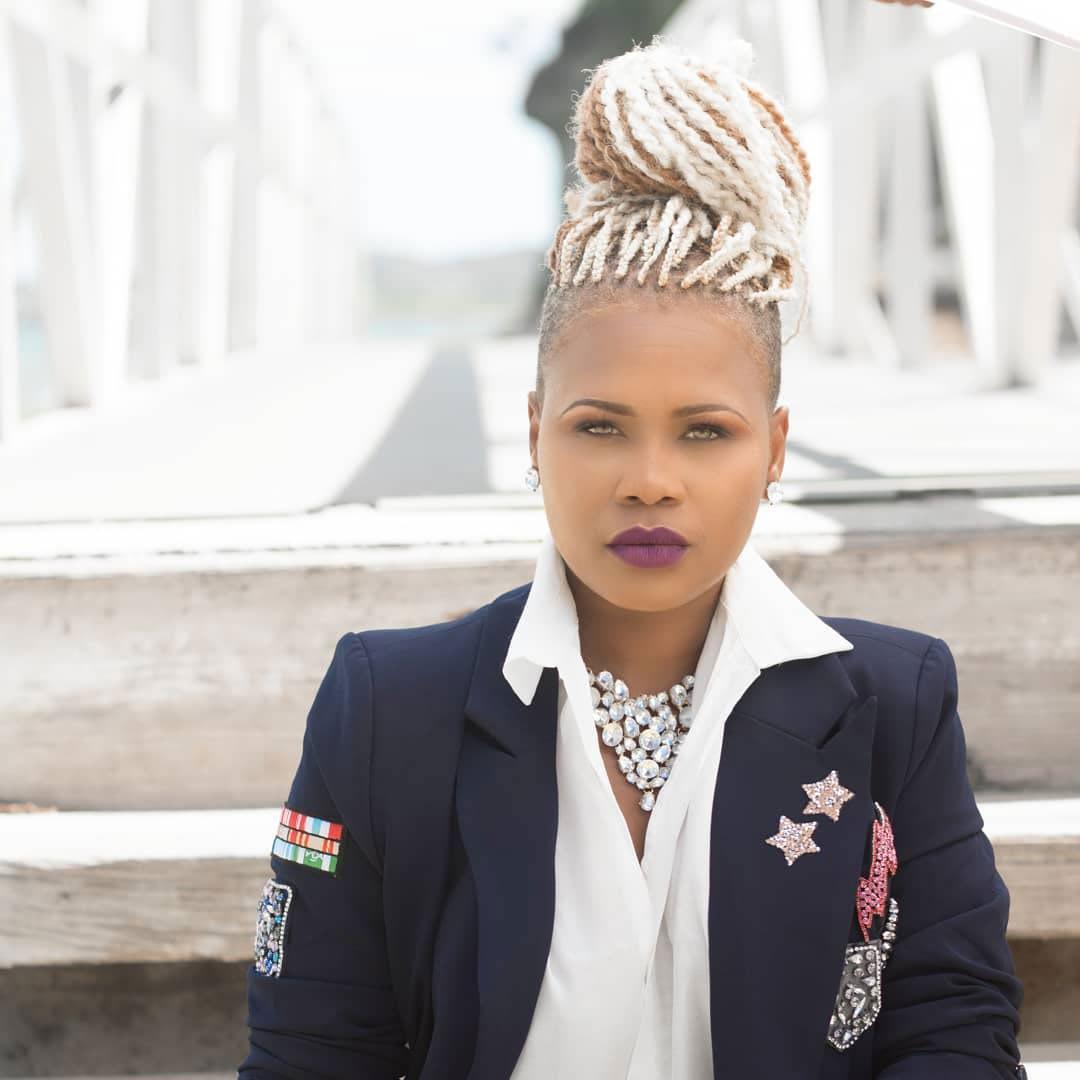
Tell us about the various tracks you did with Dominican Bands and with who?
As I told you earlier I have been working with Cornell Phillip. He has been working with our bands doing our mixes and our master. We did a track with him and Skinny (WCK, Myself and Skinny) and the track is called “Talk to You”; that was my first ever track with a Dominican band. I did a track with Triple K called “Wine on Bmper” in 2010 and then I did another track with Nayee in 2010. Then in 2014 I did a track Nayee and








